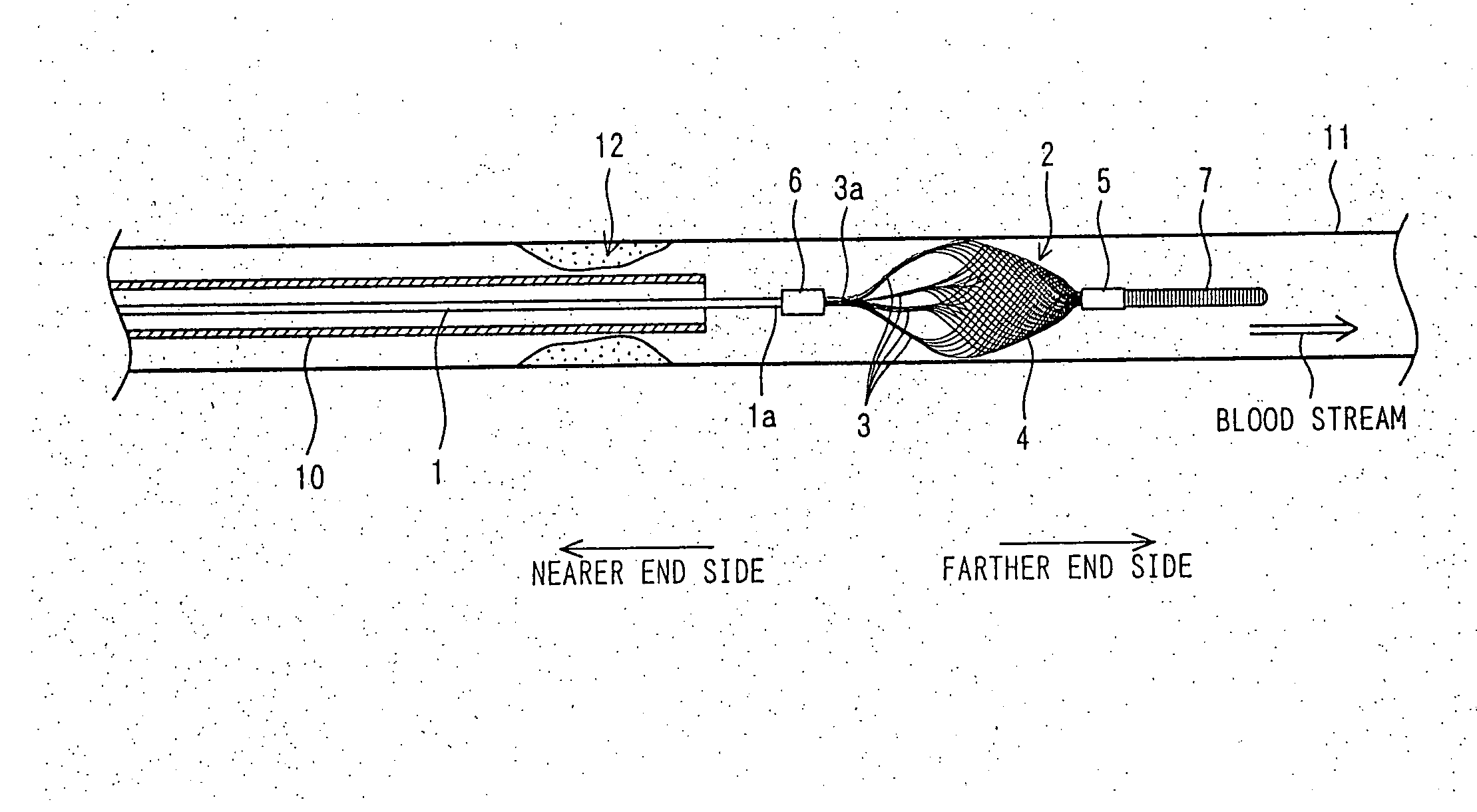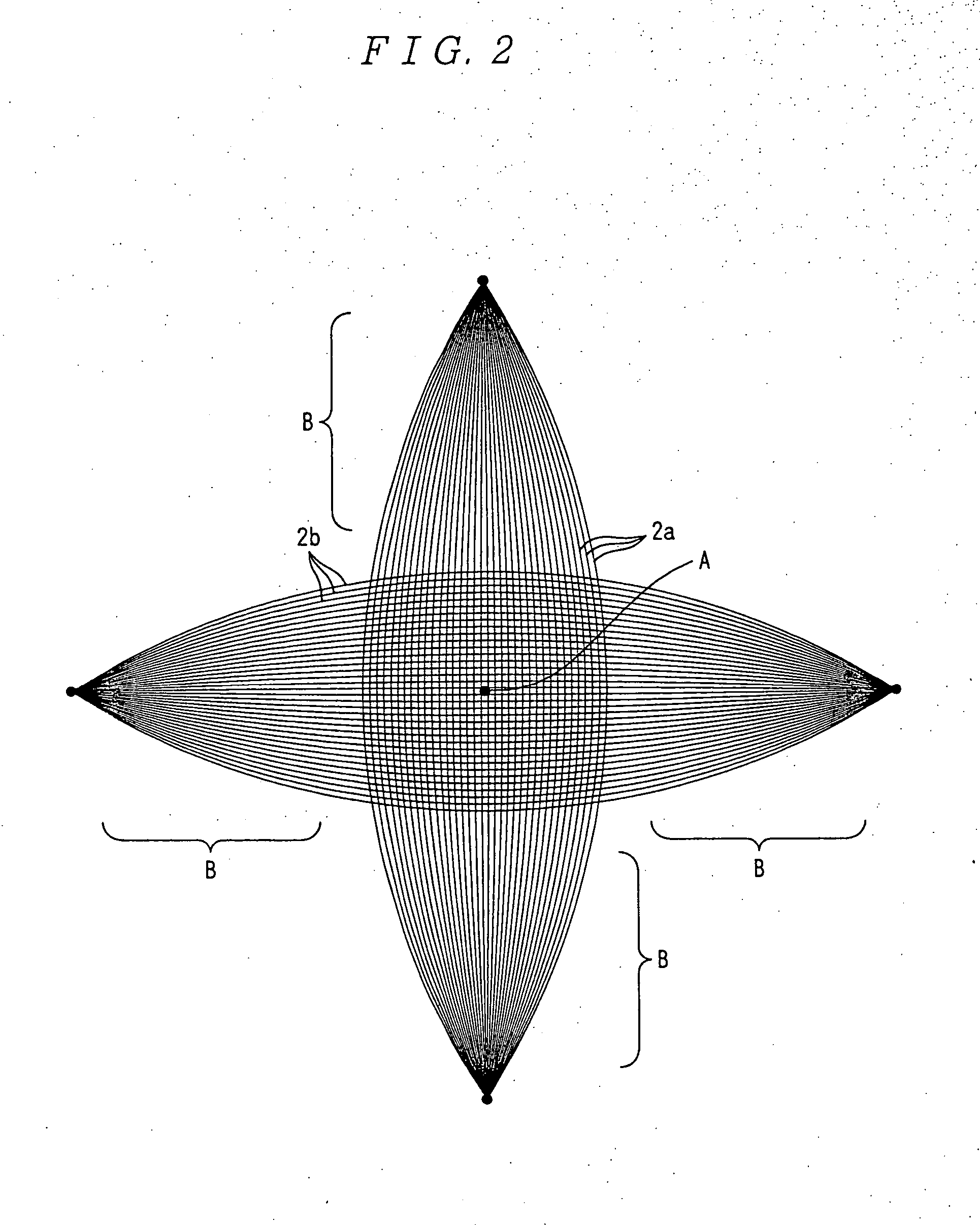Wire for inserting into biological duct
- Summary
- Abstract
- Description
- Claims
- Application Information
AI Technical Summary
Benefits of technology
Problems solved by technology
Method used
Image
Examples
embodiment
[0067] An embodiment was configured of a capture filter 2 having a maximum expansible diameter of 8 mm and a filter body 4 consisting of 72 filaments. In this case, the diameter and mesh size of the expanded filter body 4 theoretically has a relationship shown in FIG. 3. The mesh opening sizes in the drawing are given in terms of diameters in the opening sectional areas converted into circular areas.
[0068] And a wire for intravital insertion equipped with the capture filter was arranged in a glass tube of 5.8 mm in bore, instead of a blood vessel, and a capture experiment was carried out. Incidentally, the maximum mesh size in this experiment was 0.25 mm.
[0069] And, while circulating water in the glass tube at a flow rate equivalent to the blood stream, polyvinyl alcohol (PVA) of 100 to 200 micrometers in grain size was let flow, and the weight of the PVA particles which were not captured and passed the filter was measured for evaluation.
[0070] As a result of the evaluation, it w...
PUM
 Login to View More
Login to View More Abstract
Description
Claims
Application Information
 Login to View More
Login to View More - R&D
- Intellectual Property
- Life Sciences
- Materials
- Tech Scout
- Unparalleled Data Quality
- Higher Quality Content
- 60% Fewer Hallucinations
Browse by: Latest US Patents, China's latest patents, Technical Efficacy Thesaurus, Application Domain, Technology Topic, Popular Technical Reports.
© 2025 PatSnap. All rights reserved.Legal|Privacy policy|Modern Slavery Act Transparency Statement|Sitemap|About US| Contact US: help@patsnap.com



